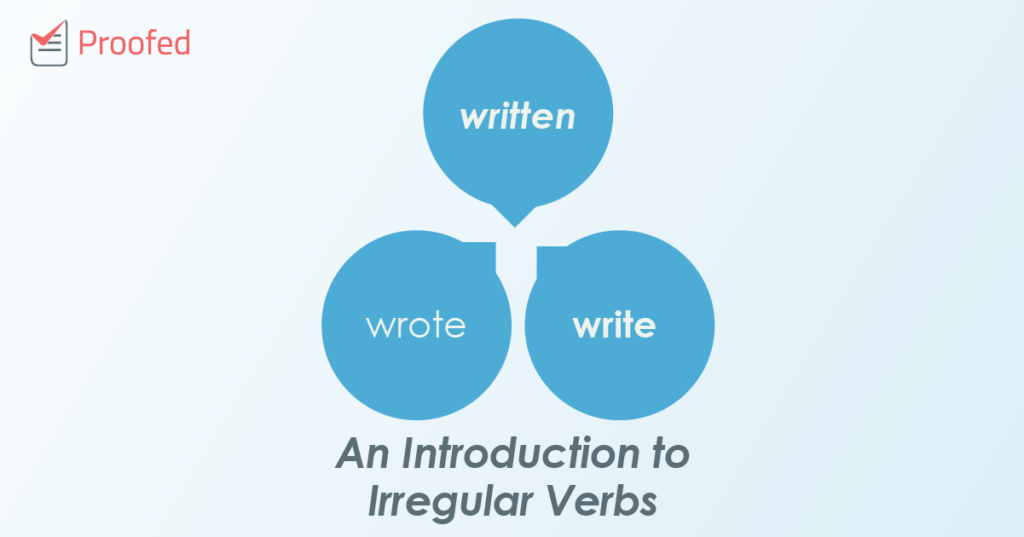Most verbs do exactly what you’d expect them to when you change their tense. But this isn’t always the case. Some verbs are grammatical rebels. And when these terms pop up, it is easy for errors to creep into your written work. Join us, then, for a quick look at how to handle irregular verbs.
Regular Verbs
Before we look at irregular verbs, though, we should define what a regular verb is first. These terms are easy to understand because their simple past tense and past participle forms all end with the letters “-ed.” For instance, the verb “sail” becomes “sailed.” Other examples include:
| Base Verb Form | Simple Past Tense | Past Participle |
| Bake | Baked | Baked |
| Hurry | Hurried | Hurried |
| Kick | Kicked | Kicked |
| Lower | Lowered | Lowered |
| Play | Played | Played |
As shown above with “hurry” and “hurried,” the spelling of certain words changes slightly when forming past tense forms of a regular verb. But even these terms end “-ed.” Importantly, too, the simple past tense and past participle forms are the same in each case for regular verbs.
Irregular Verbs
An “irregular verb” is any verb that doesn’t follow the rules above when forming simple past tense and past participle forms. As a result, these words don’t end with “-ed” like regular verbs.
For example, the simple present tense verb “break” does not become “breaked,” but actually changes into “broke” (simple past tense) and “broken” (past participle). Other examples include:
Find this useful?
Subscribe to our newsletter and get writing tips from our editors straight to your inbox.
| Base Verb Form | Simple Past Tense | Past Participle |
| Cut | Cut | Cut |
| Drink | Drank | Drunk |
| Sit | Sat | Sat |
| Think | Thought | Thought |
| Write | Wrote | Written |
As you can see, there is no real pattern to how irregular verbs behave:
- Some change just one letter in different forms (e.g., drink > drank > drunk)
- Others change more significantly (e.g., think > thought)
- In some cases, the simple past tense and past participle forms are the same
- Some words use a different term for past tense and past participle forms
- Others don’t change from the base form in either case (e.g., cut)
It can, therefore, become a bit confusing! Our advice is to watch out for irregular verbs when reading and learn how they’re used. Checking unusual terms in a dictionary and having your work proofread to correct any verb-based errors is also a good idea.
To Be or Not to Be?
No, we’re not quoting Shakespeare. We’re just highlighting how tricky the verb “be” can be. This little word is one of the sneakiest around, with a variety of forms depending on how it is used.
| Verb Forms | First Person | Second Person | Third Person | |||
| Singular | Plural | Singular | Plural | Singular | Plural | |
| Present Tense | Am | Are | Are | Is | Are | |
| Past Tense | Was | Were | Were | Was | Were | |
| Present Participle | Being | |||||
| Past Participle | Been | |||||
This may make “be” the most irregular verb around! And while it is easy to master the basic forms with practice, you should still be careful when using the subjunctive mood.
